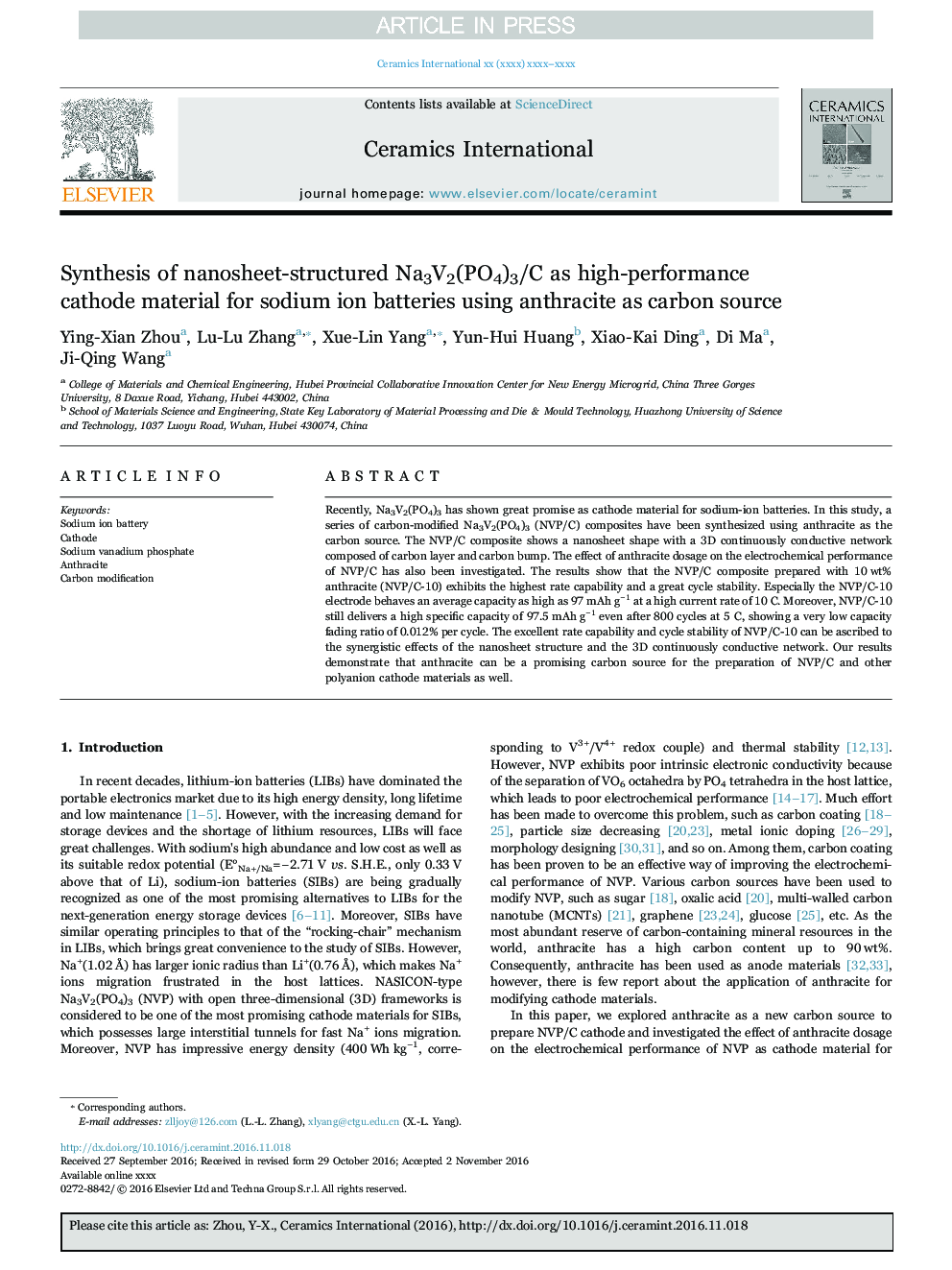| Article ID | Journal | Published Year | Pages | File Type |
|---|---|---|---|---|
| 5438301 | Ceramics International | 2017 | 5 Pages |
Abstract
Recently, Na3V2(PO4)3 has shown great promise as cathode material for sodium-ion batteries. In this study, a series of carbon-modified Na3V2(PO4)3 (NVP/C) composites have been synthesized using anthracite as the carbon source. The NVP/C composite shows a nanosheet shape with a 3D continuously conductive network composed of carbon layer and carbon bump. The effect of anthracite dosage on the electrochemical performance of NVP/C has also been investigated. The results show that the NVP/C composite prepared with 10 wt% anthracite (NVP/C-10) exhibits the highest rate capability and a great cycle stability. Especially the NVP/C-10 electrode behaves an average capacity as high as 97 mAh gâ1 at a high current rate of 10 C. Moreover, NVP/C-10 still delivers a high specific capacity of 97.5 mAh gâ1 even after 800 cycles at 5 C, showing a very low capacity fading ratio of 0.012% per cycle. The excellent rate capability and cycle stability of NVP/C-10 can be ascribed to the synergistic effects of the nanosheet structure and the 3D continuously conductive network. Our results demonstrate that anthracite can be a promising carbon source for the preparation of NVP/C and other polyanion cathode materials as well.
Related Topics
Physical Sciences and Engineering
Materials Science
Ceramics and Composites
Authors
Ying-Xian Zhou, Lu-Lu Zhang, Xue-Lin Yang, Yun-Hui Huang, Xiao-Kai Ding, Di Ma, Ji-Qing Wang,
